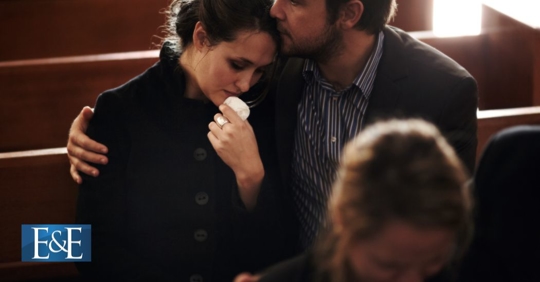Losing a loved one unexpectedly is one of the most devastating events a family can face. The emotional and financial burdens can feel even more overwhelming when that loss is due to someone else's negligence or wrongful actions. If you are navigating the challenging process of filing a wrongful death claim in California, you need to be prepared. You need to understand the damages you may recover and the legal recovery options available to you.
What Is a Wrongful Death Claim?
A wrongful death claim arises when an individual loses their life due to another party's negligence, recklessness, or intentional misconduct. Under California law, eligible family members may bring a lawsuit to seek compensation for the losses they have suffered as a result of the victim's death.
These claims are designed to address the financial and emotional hardships that surviving family members face and to hold the responsible party accountable for their actions.
Who Can File a Wrongful Death Claim in California?
California law specifies who is legally eligible to file a wrongful death claim. Typically, the following individuals have standing to bring a claim:
- The deceased’s spouse or domestic partner
- The deceased’s children
- If there are no direct heirs, other individuals who are entitled to the deceased’s property, such as parents, siblings, or other relatives
Types of Recoverable Damages in a Wrongful Death Claim
Family members filing a wrongful death claim in California may be entitled to economic and non-economic damages. Below is a breakdown of each type:
Economic Damages
These are measurable financial losses that directly result from the deceased’s passing. They include:
- Funeral and burial expenses: Compensation for costs associated with laying your loved one to rest.
- Loss of financial support: The income the deceased would have provided to the family if they had lived.
- Loss of benefits or inheritance: The value of retirement benefits, pensions, or inheritance that family members will no longer receive.
- Household expenses: Costs of services the deceased would have provided, such as childcare, cleaning, or home maintenance.
Non-economic Damages
These damages account for the emotional and relational losses the family endures as a result of their loved one’s death. These include:
- Loss of companionship and love: The deprivation of the affection, love, and support the deceased provided.
- Loss of consortium: The loss of the marital relationship, especially for the deceased’s spouse or partner.
- Loss of guidance for children: The absence of parental care, guidance, and mentorship that the deceased would have provided.
Punitive Damages
While not typically awarded in wrongful death claims, punitive damages may apply in cases involving egregious misconduct, such as intentional harm or extreme negligence. These damages are intended to punish the responsible party and deter similar behavior in the future.
How Are Damages Calculated?
Calculating damages in a wrongful death claim can be complex, as it requires assessing both tangible and intangible factors. Courts consider the following when determining compensation:
- The victim’s age and life expectancy
- Their earning potential and employment status
- The relationship between the deceased and the claimant
- The family’s financial dependency on the deceased
Working with an experienced wrongful death attorney is crucial to ensure all potential damages are identified and accurately calculated.
Steps to File a Wrongful Death Claim in California
If your family is coping with the wrongful death of a loved one, these steps can help you begin the legal process:
1. Consult an Attorney
Engaging with a trusted and experienced wrongful death attorney early on is critical. An attorney can provide clarity on your case, explain your rights, and guide you toward the best possible outcome.
2. Gather Evidence
Evidence is key to building a strong claim. This may include police reports, medical records, witness statements, and financial documents showing the deceased’s contributions to the family.
3. Establish Liability
To succeed with your claim, you must demonstrate that the other party’s negligence or wrongful act directly caused your loved one's death. Your attorney can help prove liability by gathering the necessary evidence and working with relevant experts.
4. File Your Claim on Time
California has a statute of limitations for wrongful death claims. Generally, you must file your lawsuit within two years of your loved one’s passing. Missing this deadline could result in losing your right to pursue compensation.
5. Negotiate or Litigate
Most wrongful death claims are resolved through negotiation with the responsible party or their insurance company. However, if negotiations do not result in a fair settlement, your attorney may take the case to court to fight for your rightful compensation.
Seek Justice and Find Support
While no amount of compensation can replace the loved one you’ve lost, pursuing a wrongful death claim can provide the financial security you need to rebuild your life and hold the responsible party accountable.
If you’ve experienced the devastating loss of a loved one due to someone else’s negligence, we are here to help. With years of experience and a commitment to fighting for justice, we at Effres & Effres are dedicated to guiding families through the legal process with compassion and professionalism.
Contact us today at (818) 222-9720 for a free consultation and take the first step toward justice for your loved one.

